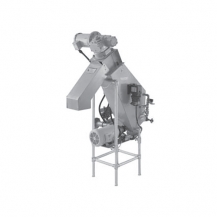Waste Pulpers
Waste Pulpers – An Efficient Solution To Food Waste Management
Waste pulpers are machines commonly used in restaurants, hotels, cafeterias, or other foodservice establishments to manage food waste more efficiently and environmentally. They are designed to process organic food and reduce it into smaller particles easily flushed away through plumbing systems or collected for further treatment. Food pulpers have a chamber for loading fruit & vegetable peels, plate scrapings, or other food waste. Then the waste is ground into a slurry or pulp with blades and water. The resulting pulp is drained into the sewage system from the food waste pulper machine.
3 Key Considerations When Buying Food Waste Pulper Machines
Waste pulpers help reduce landfill waste, foul odors, pest problems, waste disposal fees, and environmental impact. They break down volumes of waste by 50 to 85 percent depending on the type. Attend the following key points while buying a food pulper for your facility.
- Type: The less expensive and compact standalone or close coupled units are easier to install and use, with the pulping and water extraction happening at the same place. Remote waste pulpers are larger and pricier but more versatile, connecting food prep to scraping areas and pumping the processed slurry to a remote extractor. They remove the need for trash cans and taking-out-the-trash labor. These food waste grinders can also handle non-food items, such as cardboard, papers, plastics, and aluminum foil, with their 7 to 10 HP powerful motors.
- Loading Style: Batch feed food pulpers often require manual loading. Their tanks are designed to fit under a dish tray for effortless loading. Continuous feed waste pulpers are suitable for busier kitchens with higher waste generation rates that require a more ongoing waste processing solution. Loading is automated with systems like feed trays or conveyor belts.
- Capacity & Size: Determine the amount of food waste generated in your establishment to prevent overloading or underutilization. Food waste pulpers can process 250 to 4000 pounds of waste per hour. Also, check if the pulper’s physical dimensions fit in your available space.
You can integrate your waste pulper with other equipment for more seamless waste management. For instance, placing pulpers next to or under sinks, dishtables, grease traps, or work tables can significantly improve workflow. Also, some pulpers can be connected to commercial dishwashers to process food waste from plates and utensils before washing them. You may also browse other commercial dishwashing equipment to furnish your foodservice establishment.








